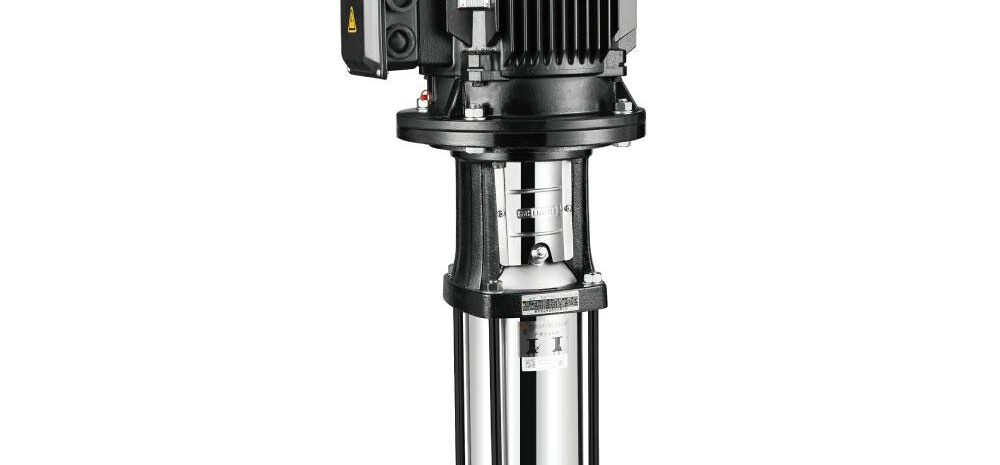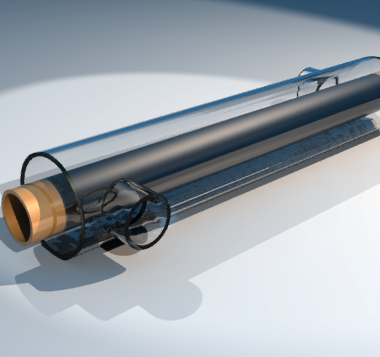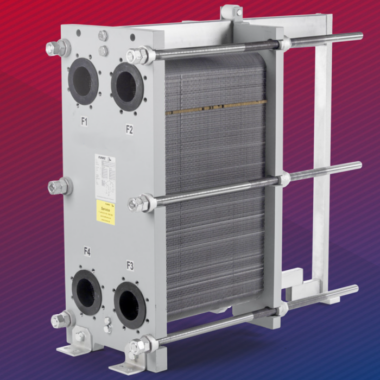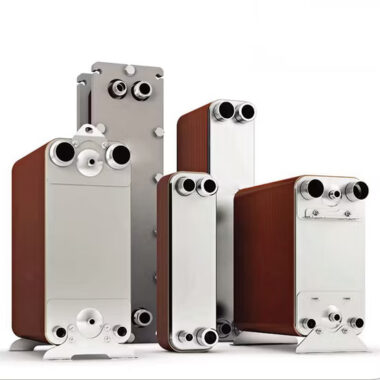Multi-Stage Pump Motors
Introduction
Multi-stage pump motors are specialized motors that drive multi-stage pumps, designed to handle fluid transfer under high-pressure conditions by using a series of impellers, or “stages.” These motors play a crucial role in industries where maintaining consistent fluid flow at elevated pressures is vital for operational efficiency. The pump’s design, with multiple impellers, ensures a gradual increase in pressure, enabling the system to handle challenging tasks like pumping water to high elevations, transporting fluids over long distances, or performing critical industrial functions. Multi-stage pump motors are commonly found in applications such as water supply systems, HVAC (Heating, Ventilation, and Air Conditioning) systems, agricultural irrigation, firefighting systems, and many industrial processes, particularly in power plants, chemical processing, and oil and gas industries. Due to their ability to achieve high pressure with optimal energy consumption and reduced wear and tear, multi-stage pump motors are considered essential components in both small-scale and large-scale operations.
Key Features of Multi-Stage Pump Motors:
- High Pressure Output: Multi-stage pump motors are engineered to generate high pressure through a series of impellers placed in stages. Each stage works by adding incremental pressure to the fluid, resulting in significantly higher pressure than what can be achieved with a single impeller. This makes them essential in applications like water supply to high-rise buildings, where water must be pumped to great heights, or in irrigation systems where water must travel long distances. By combining multiple stages, the pump can reach high pressure levels while maintaining efficient fluid flow.
- Energy Efficiency: One of the standout benefits of multi-stage pump motors is their energy efficiency. The use of multiple impellers allows the pump to distribute the workload, reducing the energy required to achieve the necessary pressure. Instead of relying on one large impeller to handle the entire load, multi-stage pumps operate more smoothly and efficiently, using less power to pump fluids over long distances or to higher elevations. The motors are designed to match the pump’s operational characteristics, ensuring that energy consumption is minimized, leading to cost savings over time.
- Compact Design: Despite their ability to generate high pressures, multi-stage pumps and motors are typically more compact than single-stage pumps with equivalent power and pressure capabilities. This compact design is particularly valuable in installations where space is limited, such as in commercial buildings, residential complexes, or areas with confined machinery spaces. The multi-stage approach reduces the size of the pump while still allowing it to achieve the desired flow rates and pressures, making it easier to integrate into various systems without occupying large physical space.
- Durability and Longevity: Multi-stage pump motors are designed to endure demanding operational conditions for long periods. These motors are built to handle the high forces generated by the multiple stages, including the increased pressure and flow. Their robust construction ensures that they can operate continuously with minimal wear and tear, offering extended service life. Proper maintenance is essential, but even with heavy use, these motors are known for their reliability. With durable materials and advanced engineering, they are capable of withstanding the stresses and strains that come with high-pressure fluid transfer.
- Versatility: Multi-stage pump motors can be used across various sectors and applications, making them highly versatile. In the industrial sector, they are used in processes that require high-pressure water or fluid delivery, such as in chemical processing, boiler feed systems, and power plants. In residential and commercial sectors, they are used for water supply, irrigation, and HVAC systems. Their ability to be adapted to different pressures, fluid types, and system configurations makes them suitable for a wide range of applications, from simple water delivery to complex industrial processes.
- Temperature Management: High-performance motors for multi-stage pumps are equipped with advanced cooling systems to manage heat dissipation effectively. Since multi-stage pumps often operate under higher pressures and longer durations, managing the temperature of the motor is essential to prevent overheating and ensure safe operation. These motors may feature external cooling systems or internal design features such as enhanced heat dissipation surfaces, which help keep temperatures within safe operating limits, preventing damage to the motor and ensuring stable performance over time.
- Low Maintenance: Due to their well-designed components and efficient operation, multi-stage pump motors generally require less maintenance than traditional pumps. The multiple impellers work together harmoniously, and the motor is designed to distribute loads evenly, reducing the risk of mechanical failure. Routine maintenance typically includes checking for wear on the impellers, lubricating moving parts, and ensuring the cooling system is working properly. In comparison to larger, single-stage pumps, multi-stage pump motors tend to have a longer operational lifespan, and their ease of maintenance further contributes to their cost-effectiveness.
Applications of Multi-Stage Pump Motors:
- Water Supply Systems: Multi-stage pump motors are commonly used in municipal water supply systems, where high pressure is needed to pump water through long pipelines or up to elevated water tanks. These motors provide consistent and efficient pressure, ensuring that water can be delivered to different parts of the system, including residential, commercial, and industrial areas. They are also crucial in ensuring that water reaches higher elevations, such as multi-story buildings or remote areas with challenging terrains.
- Agricultural Irrigation: For agricultural irrigation, multi-stage pump motors are used to deliver water to large fields or orchards. In these systems, the water must be delivered at high pressure over vast distances. Multi-stage pumps ensure that water reaches the designated areas effectively, regardless of the distance or elevation. This ability to handle high-pressure requirements makes them indispensable in large-scale irrigation operations, improving crop yield and water management efficiency.
- Boiler Feed Systems: In power generation and industrial processes, multi-stage pump motors are used in boiler feed systems to supply water to boilers under high pressure. The efficiency of these motors ensures that steam can be produced effectively and safely, which is critical for power generation, heating systems, and chemical processing. These pumps handle the high-pressure requirements of the system, which ensures the reliability of the entire plant.
- HVAC Systems: Multi-stage pumps are used in HVAC (Heating, Ventilation, and Air Conditioning) systems to circulate water at various pressures throughout buildings. In large commercial and industrial buildings, multiple stages allow for effective temperature regulation across different sections of the building, providing consistent heating or cooling where necessary. These pumps play an essential role in maintaining a comfortable and energy-efficient environment for building occupants.
- Firefighting Systems: Multi-stage pump motors are an essential part of firefighting systems, providing the high-pressure water supply needed for fire hoses, sprinkler systems, and fire suppression equipment. In large buildings, factories, or industrial plants, the ability to generate high-pressure water flow can make the difference between an effective firefighting response and a crisis. These systems are designed to quickly and reliably deliver water under pressure to combat fires.
- Oil and Gas Industry: Multi-stage pump motors are used in oil and gas operations, particularly in offshore platforms and pipeline pumping stations, where high-pressure fluid transport is crucial. These motors provide the necessary pressure to move fluids like crude oil, natural gas, and water through long pipelines or to various processing units. Their reliability and high-pressure capacity are essential to maintaining uninterrupted operations in the oil and gas sector.
Conclusion
Multi-stage pump motors are indispensable in industries that require the movement of fluids under high pressure. Their ability to efficiently handle demanding applications across various sectors, including municipal water systems, agriculture, HVAC, fire protection, and industrial processing, makes them a cornerstone of modern infrastructure. These motors excel in energy efficiency, providing high performance with lower energy costs, and their design minimizes maintenance needs while enhancing reliability. Whether it is for moving water to the top floors of skyscrapers, powering critical industrial operations, or ensuring the reliability of firefighting systems, multi-stage pump motors offer a versatile and robust solution. Their durability, adaptability, and efficiency ensure that they continue to play an essential role in meeting the growing demands of modern industries. With the ongoing advancements in technology, the capabilities of these motors will only continue to improve, making them an even more vital component in systems requiring consistent, high-pressure fluid transfer.






